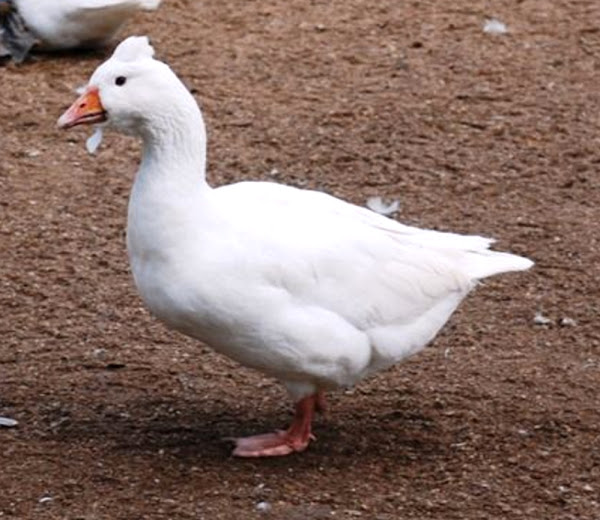The Czech goose is a landrace of domestic goose originating in the Czech lands. It is called Ceská husa in Czech, and known as Tschechische Gänse in Germany.
The breed was actually developed in Germany, but the original birds came from Bohemia. The Bohemia is an area occupying the western two-thirds of the former Czechoslovakia, now called the Czech Republic.
Raising goose was a significant source of financial income for the small farmers in this area.
More than 50,000 goose were exported each year to Bavaria until the middle of the nineteenth century. And during this period, more than 1,000 tons of feathers were exported to France, Switzerland, Germany and Netherlands.
And about 100 tons of eggs were exported to Belgium, Germany and even in England. The Czech goose breed was standardized in the United Kingdom in 2008. Read more information about the breed below.
Czech Goose Characteristics
Czech goose breed is smaller in size as compared to other goose breeds. It is very similar in appearance to the Roman goose, but is smaller in size. The plumage of these birds is mainly white.
Beak and legs of the birds are of orange color. Their neck is usually short and bulky. The breed is available in two forms: with and without a crest on the head.

Average mature body weight of the Czech ganders is about 5.5 to 6.6 kg. And the mature geese on average weight between 3.5 and 5.6 kg. Photo from Pinterest and info from Wikipedia.
Uses
The Czech goose breed is a multi-purpose breed. It is raised for both eggs and meat production and also raised for it’s feather.
Special Notes
Czech goose is a very hardy breed of goose. It is resistant to diseases, and unassuming in feeding and breeding. The geese on average lay around 10-20 eggs per year.
Their eggs are of large size, weighting around 120 grams. The geese have a very good maternal instinct. They are very good to hatch the eggs and to raise the goslings.
Along with meat and eggs production, the breed is also good for feather production. Feathers of the Czech goose are of high quality, have a very favorable ratio of down compared to other kinds of feathers.
The feathers were a valuable material for filling pillows for centuries. The breed is very good for outdoor management system, and especially suitable for small-scale extensive farming system.
The breed is also very good for the hobby farmers, because it is very good for it’s grazing ability. The breed is very good for meat production, and it’s meat is of higher quality, which is finer and tastier.
However, review full breed profile of the Czech goose in the following chart.
| Breed Name | Czech |
| Other Name | Called Ceská husa in Czech, and known as Tschechische Gänse in Germany |
| Breed Purpose | Meat, eggs, feathers |
| Special Notes | Very hardy and active, resistant to diseases, unassuming in feeding and breeding, geese have a very good maternal instinct, good for both meat and eggs, produce high quality feathers, good for extensive system, good for hobby farmers, good grazing ability |
| Breed Class | Medium |
| Ganders | 5.5 to 6.6 Kg |
| Geese | 3.5 to 5.6 Kg |
| Broodiness | Excellent |
| Climate Tolerance | Native climates |
| Egg Color | White |
| Egg Size | Large |
| Egg Productivity | 10-20 eggs per year |
| Flying Ability | Average |
| Varieties | Two: with and without a crest on the head |
| Rarity | Common |
| Country/Place of Origin | Germany |






